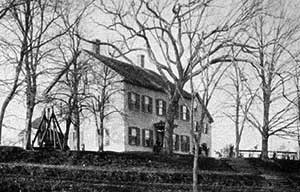From Transcendentalism to Associationism
Timeline:
- 1841 – Brook Farm is founded as a transcendentalist community in West Roxbury, Massachusetts.
- April-October, 1841 – Nathaniel Hawthorne is a resident of Brook Farm.
- 1841-1844 – George Ripley is reading Fourier’s writings and is becoming increasingly interested in Fourierism and American Associationism, the American from of Fourierism.
- January, 1844 – Brook Farm joins the American Associationist movement.
- 1844-1846 – The Harbinger is edited and printed at Brook Farm, and George Ripley and other residents of Brook Farm speak about American Associationism all across New England and the United States.
- March 3, 1846 – The main phalanstery at Brook Farm burns to the ground, and Brook Farm closes soon after.
Key Terms:
- Transcendentalism – a philosophical movement that developed in the late 1820s and 1830s mostly in New England and the eastern seaboard of the United States. Transcendentalists believed in equality, individualism, and intellectual and spiritual freedom. Notable figures involved in the movement include Henry David Thoreau, Walt Whitman, Ralph Waldo Emerson, Nathaniel Hawthorne, Margret Fuller, and George Ripley.
- Fourierism – A philosophy of social reform based off of the writings of Charles Fourier. Fourierism was created in response to the gross inequality seen in France in the 18th century, and therefore was centered around ideals of political, social and economic equality.
- American Associationism – A form of Fourierism brought to American by Albert Brisbane. Brisbane slightly altered the religious and some social aspects of Fourierism so that it could be more easily excepted by American Society.
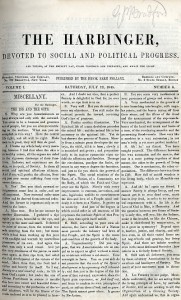
- The Harbinger – The weekly Associationist newspaper published for two years at Brook
Farm. The Harbinger rarely spoke explicitly about Fourierism or Associationism, but rather published many literature and musical reviews or other articles about general social reform. The paper had a readership of about one thousand people and reached at least as far west as Chicago - Phalanstery – The Phalanstery was the central building in the phalanx, which was Fourier’s term for a Fourierist community. Fourier described his ideal phalanx as a large area of fertile land with a large central hall – the Phalanstery, and surrounding residences and workshops or barns. An ideal phalanx would contain exactly 1620 members from diverse backgrounds who would come together in harmony for the common purpose of the community.

Key Figures:
- George Ripley
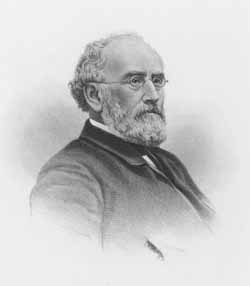 – Transcendentalist credited as the founder of Brook Farm. Some Historians have also credited George Ripley with executing the transition of Brook Farm from transcendentalism to Associationism.
– Transcendentalist credited as the founder of Brook Farm. Some Historians have also credited George Ripley with executing the transition of Brook Farm from transcendentalism to Associationism.
- Charles Fourier
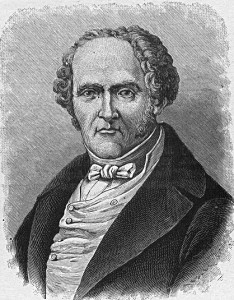 – The French philosopher whose writing on social reform inspired the Fourierist movement. Fourier wrote detailed accounts of what he envisioned for his utopian community, but due to a lack of funding he never managed to build his ideal community.
– The French philosopher whose writing on social reform inspired the Fourierist movement. Fourier wrote detailed accounts of what he envisioned for his utopian community, but due to a lack of funding he never managed to build his ideal community.
- Albert Brisbane
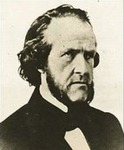 – Albert Brisbane discovered Fourierism while travelling in Europe. He was so inspired by the movement that he decided to bring it back to America. However, he recognized that the Fourierism in its original from might not meld well with American culture and values, so he makes small adjustments to the values of the movement and gives it a new name: American Associationism.
– Albert Brisbane discovered Fourierism while travelling in Europe. He was so inspired by the movement that he decided to bring it back to America. However, he recognized that the Fourierism in its original from might not meld well with American culture and values, so he makes small adjustments to the values of the movement and gives it a new name: American Associationism.
- Nathaniel Hawthorne
 – A resident of Brook Farm for about six months, Nathaniel Hawthorne was a prominent transcendentalist who also became a well known novelist. While at Brook Farm, Hawthorne wrote many letters to his spouse and other friends and associates. These letters reveal a lot about the experience of living at Brook Farm and ups and downs of the community.
– A resident of Brook Farm for about six months, Nathaniel Hawthorne was a prominent transcendentalist who also became a well known novelist. While at Brook Farm, Hawthorne wrote many letters to his spouse and other friends and associates. These letters reveal a lot about the experience of living at Brook Farm and ups and downs of the community.
Key Findings From Research:
- Nathaniel Hawthorne’s letters reveal that Brook Farm did not meet expectations as a transcendentalist community. Hawthorne writes that he does not enjoy the farm work that each member must help with, and that he does not have the space to think and write that he was hoping for.
- George Ripley is a central figure in the creation and transformation of Brook Farm. Ripley had the vision for the community from the beginning, and Ripley certainly led the community in its transition. He was most inspired by Associationism, and Zonderman writes in a study of Ripley that he even persuaded the other members of Brook Farm to transition. Ripley’s speaking engagements about Associationism show his devotion to Associationism.
- Brook Farm struggled financially. Hawthorne writes about Brook Farm’s financial problems in his letters, and other historians have also written about the poor financial situation at Brook Farm. Some suggest that a more secure future with the Associationist movements contributed to the decision to transition.
- Transcendentalist and Fourierist ideology are not so different. Richard Francis argues that the two ideologies that Brook Farm operated under were actually not very different. They both believe in social reform, equality, and individual rights. For this reason, the transition of Brook Farm is not as surprising as one might expect. The only significant difference between the two movements is the ways in which the attempt to change society. Transcendentalists look inward and attempt to change individually; they do not attempt to change all of society. Fourierists and Associationists are attempting to cause widespread social reform.
- The Harbinger was edited and published at Brook Farm after the transition. This is evidence of the entire communities interest in and devotion to Associationism. This evidence also is central to my argument that the residents of Brook Farm did not need to be persuaded to transition, and did not transition only for financial reasons.
